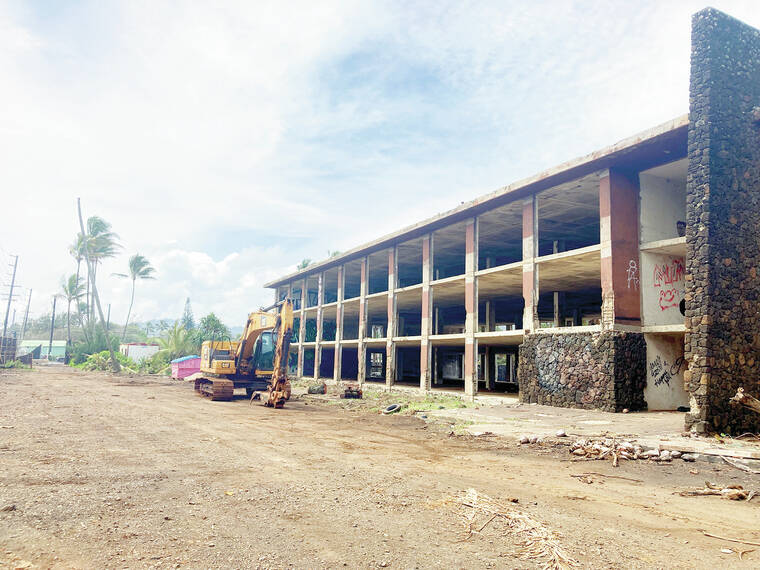WAILUA — Environmental activists on Wednesday reiterated their call to revert the lands surrounding the long-dilapidated Coco Palms Resort into wetlands, arguing that natural restoration could help Kaua‘i better combat climate change and its impacts.
Kaua‘i Community College Hawaiian studies professor Puali‘ili‘imaikalani Rossi and environmental scientist Fern Holland stressed the value of a Wailua wetland on Wednesday evening during the Kaua‘i Climate Action Forum, a monthly, virtual environmental forum.
Rossi, who was raised in Wailua since she was 4 months old and has familial ties to Wailua, acknowledged that the Coco Palms Resort served as a valuable community space for many Kaua‘i residents during its 39-year run.
However, she noted that the growing threat of extreme weather events and erosion has left any future for the Coco Palms as a hotel unlikely, as the lands sit directly within a flood zone.
“Although there have been multiple attempts to rebuild, we feel that a hotel is no longer suitable,” Rossi said. “It is susceptible to flooding. Some of the flooding actually occurred when the hotel was in operation, and climate change has drastically altered what we see today.”
Rossi continued, adding that restoration of areas like Alakoko Fishpond has her and other environmentalists confident that a restoration effort in Wailua could see similarly successful results in which nature finds its way back.
“When we work with the ‘aina and not against the ‘aina, we see the return of a lot of native animals, such as the birds and fish,” she said.
Holland emphasized the benefit of restored wetlands as a tool for carbon sequestration — a process in which carbon dioxide is pulled out of the air via natural processes.
“Wetland plants regularly remove CO2 from the atmosphere, and they sequester it into the form of soil carbon, which it can remain then sequestered for centuries,” Holland said.
“The main carbon sequestration rates of wetland systems, particularly coastal wetland systems, are generally several times greater than forests are. … About 8.1 million tons of carbon is absorbed by U.S. wetlands every year, which is equivalent to over 900 million gallons of gas.”
Holland also listed several additional advantages of having a wetland in Wailua, including increased coastal resiliency, groundwater recharge and improved water drainage while also naturally filtering out sediments and nutrients that could pollute nearshore waters.
“Really, we’re looking at a huge range of benefits to our community and our environment,” Holland said.
While talk of reclaiming parcels in Wailua often revolves around the always-controversial Coco Palms lands, Rossi said a proper culturally and environmentally focused project would have to go further.
“Our vision of protecting Wailuanuiaho‘ano doesn’t just include the former Coco Palms hotel, but it also includes recognizing and respecting the he‘iau, what the he‘iau were used for, the wahi pana or sacred sites, the fish ponds or loko i‘a, and the burial sites — all of which are closely centered around the Coco Palms property,” she said.
“The larger wetland restoration of this entire floodplain area is really part of the bigger vision,” Holland added. “And really, the vision that we have for this place is a community effort to restore Wailuanuiaho‘ano to a flourishing space for cultural enrichment, education, conservation and food production. Really, we see a center of Hawaiian education, of cultural practice, of community-based environment and land stewardship here on Kaua‘i.”
•••
Jackson Healy, reporter, can be reached at 808-647-4966 or jhealy@thegardenisland.com.


